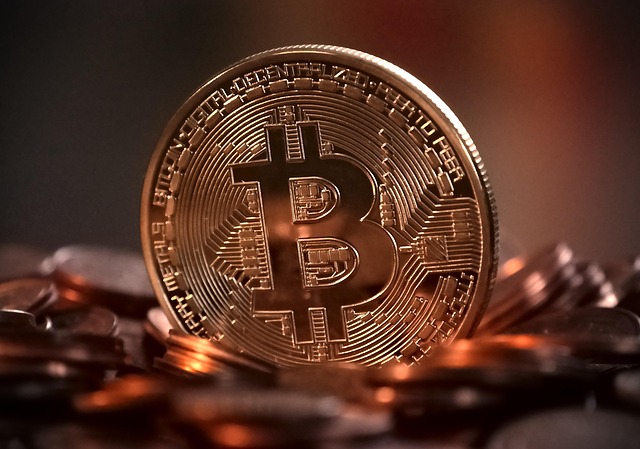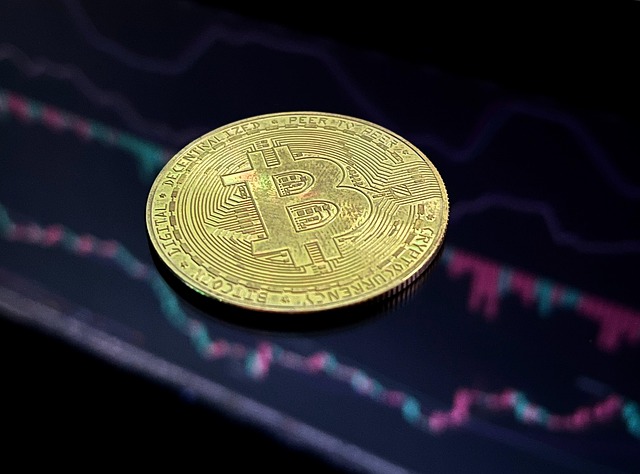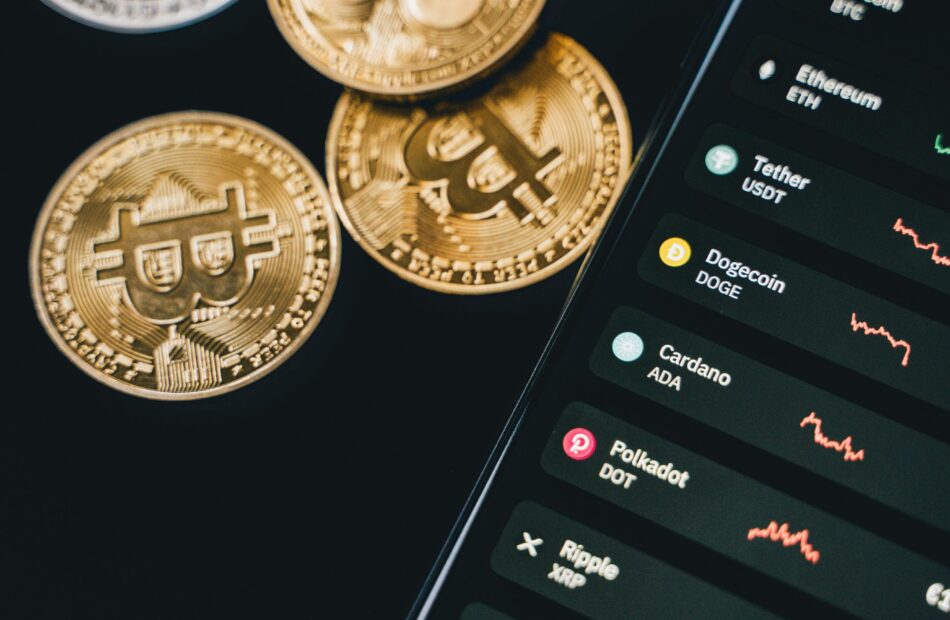Asian firms ramp up Bitcoin buys: Metaplanet, HK Asia lead charge
Asian investment firms are stepping up their Bitcoin accumulation strategies, with Japan’s Metaplanet and Hong Kong’s HK Asia Holdings leading the way.Tokyo-based Metaplanet disclosed on April 24 that it acquired an additional 145 Bitcoin (BTC) for 1.9 billion Japanese yen (around $13.4 million), boosting its total holdings to 5,000 BTC.Metaplanet CEO Simon Gerovich confirmed the company has reached 50% of its initial goal of amassing 10,000 BTC by the end of 2025.Metaplanet CEO Simon Gerovich announcing Bitcoin purchase. Source: Simon GerovichThe firm has been aggressive in its Bitcoin treasury operations, using bond issuances and Bitcoin income strategies, such as selling cash-secured BTC put options, to finance its acquisitions.Since initiating its Bitcoin strategy, Metaplanet’s stock has surged over 3,000%. The company aims to hold 21,000 BTC by the close of 2026.Related: Strike’s Mallers to head firm seeking superior Bitcoin play to MSTRHK Asia Holdings to raise $8.35 million for BTC purchasesHK Asia Holdings Limited has also announced plans to raise approximately $65 million Hong Kong dollars ($8.35 million) by issuing new shares and convertible notes to potentially buy more BTC.According to an April 23 filing, the company entered into share subscription and convertible note (CN) subscription agreements after trading hours.The deal includes issuing 3,272,000 new shares at a subscription price of HK$4.01 per share, alongside convertible notes valued at HK$52.38 million in aggregate principal amount. The newly issued shares will represent about 0.82% of HK Asia Holdings’ total shares in circulation.While the filing does not mention that HK Asia Holdings intends to use the funds to buy Bitcoin, many in the crypto community speculated that the capital raise is expected to fund further Bitcoin acquisitions.Source: CointelegraphThe speculation follows HK Asia’s February decision to step into Bitcoin markets. After buying its first BTC on Feb. 16, the firm doubled its share price within a day.By Feb. 20, HK Asia expanded its holdings by purchasing an additional 7.88 BTC, bringing its total to nearly 9 BTC at an average price of $97,021 per coin.Shares in HK Asia were up by around 5.4% on April 24 at the Hong Kong stock market closing, according to Google Finance.Related: Bitcoin exchange buying is back as ‘Spoofy the Whale’ lifts $90K asksSaylor’s Strategy champions Bitcoin strategyMichael Saylor’s Strategy, one of the world’s largest publicly listed corporate Bitcoin holders, has championed the Bitcoin accumulation strategy by consistently issuing convertible notes and at-the-market (ATM) equity offerings to fund aggressive Bitcoin purchases.In February, Strategy announced plans to raise another $2 billion through 0% senior convertible notes to purchase more Bitcoin.As of April 20, Strategy held 538,200 BTC on its balance sheet. The figure includes the company’s most recent acquisition of 6,556 BTC for approximately $555.8 million.Magazine: Bitcoin ATH sooner than expected? XRP may drop 40%, and more: Hodler’s Digest, March 23–29
Luxury app Dorsia taps MoonPay for crypto payments
Luxury hospitality platform Dorsia is rolling out crypto payments for clients in the United States, the United Kingdom, Europe, and six Arab nations.The payments feature is being enabled through a partnership with MoonPay, the companies told Cointelegraph. With the integration, users will be able to book luxury travel experiences and complete transactions directly in USDC (USDC) and Solana-based tokens through the Dorsia app.“[…] integrating crypto payments is a natural next step in aligning with the evolving preferences of our members,” Marc Lotenberg, founder and CEO of Dorsia, said in an interview.Dorsia is the latest luxury firm to turn to crypto services for high-net-worth individuals. The industry has been highly active in the Web3 space over the past few years, exploring crypto on-ramps and customer engagement features, such as non-fungible tokens and metaverses.Luxury carmakers Lamborghini and Ferrari, and watchmakers like Patek Philippe, are a few companies accepting payments in cryptocurrencies.Dorsia is a luxury hospitality app that connects its members with high-end restaurants and cultural experiences. Instead of traditional booking models, Dorsia uses dynamic pricing and a membership-based system for reservations at luxury facilities. According to Grand View Research, the luxury travel market is expected to reach $2.3 trillion by 2030.Related: Gucci the latest luxury brand to accept crypto payments in storeThe company has raised a total of $50.4 million in funding across Seed and Series A rounds. Major backers include Index Ventures, RedSea, and individuals from Meta, Uber, Atomic, Groot Hospitality, and the Rockwell Group.Related: Polygon-based lending platform to provide crypto liquidity for luxury itemsMoonPay expands in 2024Dorsia isn’t the first luxury brand to partner with MoonPay. According to the company’s CEO, Ivan Soto-Wright, it also offers a crypto on-ramp for clients like fashion house Gucci, carmaker Bugatti, and auction house Christie’s.MoonPay’s net revenue increased 112% in 2024, while transaction volume in Q1 2025 soared 123%, according to the company.In January, MoonPay acquired the Solana-based payment processor Helio in a $175 million deal. The acquisition enabled a broader range of partnerships for payments, including with Dorsia, the company revealed. MoonPay has also recently acquired Iron to facilitate payments in stablecoins for merchants.Magazine: AI Eye: AI travel booking hilariously bad, 3 weird uses for ChatGPT, crypto plugins
Bitcoin ETFs log $912M inflows in ‘dramatic’ investor sentiment boost
Investments in Bitcoin exchange-traded funds (ETFs) have rebounded to levels last seen in January, signaling a recovery in investor sentiment from concerns around global trade tariff escalations.US spot Bitcoin (BTC) ETFs had over $912 million worth of cumulative net inflows on April 22, marking their highest daily investment in more than three months since Jan. 21, Farside Investors data shows.Bitcoin ETF Flow, millions. Source: Farside Investors“Bitcoin ETPs just saw the largest daily inflows since 21st January in a dramatic improvement in sentiment,” according to James Butterfill, head of research at CoinShares.Related: Bitcoin still on track for $1.8M in 2035, says analystInvestor sentiment appeared to improve after US President Donald Trump said that import tariffs on Chinese goods will “come down substantially,” adopting a softer tone in negotiations.The de-escalation and growing ETF inflows pushed Bitcoin price above $93,000 for the first time in seven weeks, Cointelegraph reported on April 23.The growing institutional investment and presence of ETFs may also accelerate the historic four-year cycle and bolster BTC to new highs before the end of 2025, analysts told Cointelegraph.US dollar weakness may reinforce Bitcoin’s safe-haven appealThe US dollar’s weakness may also contribute to the growing investor demand for Bitcoin. DXY, year-to-date chart. Source: Cointelegraph/TradingView The US Dollar Index (DXY), which measures the strength of the greenback against a basket of leading fiat currencies, fell nearly 9% since the beginning of 2025, to an over three-year low of 98.8 last seen in April 2022, TradingView data shows.“Macro factors like a weakening dollar and rising gold correlation,” may reinforce Bitcoin’s appeal as a hedge against economic volatility, Ryan Lee, chief analyst at Bitget Research, told Cointelegraph.Related: Crypto, stocks enter ‘new phase of trade war’ as US-China tensions riseBitcoin no longer trading in the “shadow of tech”Crypto and traditional stock markets are “walking a tightrope between political drama and economic reality,” with Bitcoin staging a significant rebound thanks to “strong ETF inflows, institutional acquisitions, and a weakening US dollar,” according to Nexo dispatch analyst Iliya Kalchev:“Bitcoin’s strength amid dollar weakness, record gold prices, and renewed institutional buying reflects a market recalibrating what safety looks like.”“The conversation has clearly shifted. Bitcoin is no longer trading in the shadows of tech — it’s becoming a lens through which macro uncertainty is priced,” he added.Nansen CEO Alex Svanevik also praised Bitcoin’s resilience, noting that the maturing asset is becoming “less Nasdaq — more gold” over the past two weeks, increasingly acting as a safe haven asset against economic turmoil, but concerns over economic recession may limit its price trajectory.On April 21, BitMEX co-founder Arthur Hayes predicted that this might be the “last chance” to buy Bitcoin below $100,000, as the incoming US Treasury buybacks may signal the next significant catalyst for Bitcoin price.Magazine: Bitcoin’s odds of June highs, SOL’s $485M outflows, and more: Hodler’s Digest, March 2 – 8Investments in Bitcoin exchange-traded funds (ETFs) have resurged to January’s levels, signaling a significant recovery in investor sentiment from the concerns related to global trade tariff escalations.The US spot Bitcoin (BTC) ETFs received over $912 million worth of cumulative net inflows on April 22, marking the highest daily investment in over three months since Jan. 21, Farside Investors data shows.Bitcoin ETF Flow, millions, Farside Investors“Bitcoin ETPs just saw the largest daily inflows since 21st January in a dramatic improvement in sentiment,” wrote James Butterfill, head of research at CoinShares, in an April 23 X post.Related: Bitcoin still on track for $1.8M in 2035, says analystInvestor sentiment was significantly improved after US President Donald Trump said that import tariffs on Chinese goods will “come down substantially,” showcasing a softer tone in negotiations.The notable de-escalation and the growing ETF inflows pushed Bitcoin price above $93,000 for the first time in seven weeks, Cointelegraph reported on April 23.The growing institutional investment and presence of ETFs may accelerate the historic four-year cycle and bolster Bitcoin to new highs before the end of 2025, analysts told Cointelegraph.Related: Crypto, stocks enter ‘new phase of trade war’ as US-China tensions riseBitcoin no longer trading in the “shadow of tech”Crypto and traditional stock markets are “walking a tightrope between political drama and economic reality,” with Bitcoin staging a significant rebound thanks to “strong ETF inflows, institutional acquisitions, and a weakening USD,” according to Nexo dispatch analyst Iliya Kalchev.The analyst told Cointelegraph, adding:“Bitcoin’s strength amid dollar weakness, record gold prices, and renewed institutional buying reflects a market recalibrating what safety looks like.”“The conversation has clearly shifted. Bitcoin is no longer trading in the shadows of tech — it’s becoming a lens through which macro uncertainty is priced,” the analyst added.Nansen CEO Alex Svanevik also praised Bitcoin’s resilience, noting that the maturing asset is becoming “less Nasdaq — more gold” over the past two weeks, increasingly acting as a safe haven asset against economic turmoil, but concerns over economic recession may limit its price trajectory.On April 21, BitMEX co-founder Arthur Hayes predicted that this might be the “last chance” to buy Bitcoin below $100,000, as the incoming US Treasury buybacks may signal the next significant catalyst for Bitcoin price.Magazine: Bitcoin’s odds of June highs, SOL’s $485M outflows, and more: Hodler’s Digest, March 2 – 8
Institutional demand could push BTC past $200k in 2025 — Analysts
Demand from financial institutions could push the price of Bitcoin (BTC) as high as $200,000 per coin in 2025, according to two research reports reviewed by Cointelegraph. Analysts from Standard Chartered and Intellectia AI said institutional Bitcoin demand from exchange-traded funds (ETFs) and traders seeking to hedge against macroeconomic risk could cause Bitcoin’s price to more than double this year.“While the forecast is optimistic, it’s also conditional. Any black swan — from a major regulatory clampdown to a geopolitical event — can disrupt trajectories,” Fei Chen, Intellectia AI’s chief investment strategist, told Cointelegraph. Bitcoin ETF inflows since January 2024. Source: CoinGlassRelated: US Bitcoin ETFs clock biggest inflows since January as crypto markets gainBullish sentimentThe reports come as Bitcoin broke past $90,000 on April 22 for the first time in six weeks, reflecting traders embracing Bitcoin and gold as potential hedges against looming trade wars and geopolitical volatility. The price action followed the biggest daily net inflows into US spot Bitcoin ETFs since January. The US’s 11 spot BTC funds collectively pulled more than $380 million in net inflows on April 21, according to CoinGlass data.Intellectia AI said institutional demand drivers — including corporate Bitcoin buyers and exchanges such as Coinbase and Kraken — could continue to propel positive price action. Corporate Bitcoin treasuries already hold nearly $65 billion worth of BTC, according to data from Bitcointreasuries.net.Hedgers still prefer gold over Bitcoin. Source: Binance ResearchHedging or speculation?Gold and BTC “appear to have become more important components of investors’ portfolios structurally” as they increasingly seek to hedge against geopolitical risk and inflation, investment bank JP Morgan said in a January research note. However, Bitcoin’s correlation with gold — historically a preferred hedge against macroeconomic uncertainty — has been low since US President Donald Trump announced sweeping import tariffs on April 2, Binance Research said on April 7. In fact, Bitcoin has been more closely correlated with equities, Binance said. Paradoxically, sustained ETF inflows could further diminish Bitcoin’s status as a macroeconomic hedge, eroding one of its most attractive traits for institutions, Spencer Yang, a core contributor for crypto infrastructure project Fractal Bitcoin, told Cointelegraph. “Despite growing institutional interest, Bitcoin’s long-term resilience won’t be secured by balance sheet optics alone — it depends on real usage,” Yang said. “That means people actually transacting, building, and experimenting on the network — not just holding BTC as a speculative asset.”Magazine: Financial nihilism in crypto is over — It’s time to dream big again
Bitcoin traders turn to $93K yearly open as BTC price hits 6-week high
Bitcoin (BTC) hit six-week highs on April 22 as US trade war tensions emboldened crypto bulls.BTC/USD 1-hour chart with 200SMA. Source: Cointelegraph/TradingViewBitcoin lines up resistance flips around $90,000Data from Cointelegraph Markets Pro and TradingView showed BTC/USD above $91,000 after the Wall Street open — its highest since March 7.Bitcoin and gold benefited from increasing market nerves over how China, Japan and others would respond to US trade tariffs.XAU/USD set fresh all-time highs on the day, while BTC/USD faced a key bull market support trend line that has been acting as resistance since early March.BTC/USD 1-day chart with 200SMA. Source: Cointelegraph/TradingViewFor traders, the 200-day simple moving average (SMA) at $88,370 thus became the level to flip back to support on daily timeframes.“Closing in on the big $90K-$91K horizontal area which acted as the previous range low,” popular trader Daan Crypto Trades wrote in part of ongoing analysis on X. An accompanying chart showed the need to crack the area around $93,000 — Bitcoin’s yearly open — to confirm the moving average reclaim. BTC/USDT perpetual contract 1-day chart. Source: Daan Crypto Trades/XContinuing, Keith Alan, co-founder of trading resource Material Indicators, had similar views.“If history has taught us anything, it’s important to watch for fake outs and confirmations,” he noted. “IMO, confirmation of the trend reversal will come when BTC reclaims the Yearly Open. That move will put price on a trajectory to unwind the key moving averages and deliver a series of Golden Crosses in the days and weeks ahead.”BTC/USD 1-day chart. Source: Keith Alan/XBTC price rebound skepticism remainsFellow trader Roman, meanwhile, was among those staying cautious on the validity of a short-term BTC price swing.Related: US dollar goes ‘no-bid’ — 5 things to know in Bitcoin this week“Price now retesting prior support as resistance for now. A breakout above 93k would be great for bulls, however, I’m unsure if we get it,” he told X followers about the weekly chart. “Wait for weekly close before you make assumptions or get excited. We’ve seen so many fakeouts before. 5 days left!”BTC/USD 1-week chart with 200SMA. Source: Cointelegraph/TradingViewAlso unsure that the move would last was popular analytics resource Ecoinometrics, which acknowledged that Bitcoin ultimately lost out when the Nasdaq 100 index was below its own 200-day SMA.“Bitcoin is climbing. The NASDAQ is sliding. That kind of divergence doesn’t usually last,” it summarized on the day. “Historically, when the NASDAQ’s 200-day moving average trend is down, Bitcoin runs into macro headwinds.”BTC/USD vs. Nasdaq 100 chart. Source: Ecoinometrics/XThis article does not contain investment advice or recommendations. Every investment and trading move involves risk, and readers should conduct their own research when making a decision.
ARK adds staked Solana to two tech ETFs
ARK Invest has added exposure to staked Solana (SOL) to the portfolios of two of its exchange-traded funds (ETFs), the asset manager said in a client email reviewed by Cointelegraph. As of April 21, the two ARK funds — ARK Next Generation Internet ETF (ARKW) and ARK Fintech Innovation ETF (ARKF) — now hold shares of 3iQ’s Solana Staking ETF (SOLQ), a Canadian ETF holding staked SOL, ARK said. The two ARK funds are designed to offer broad exposure to emerging technologies, and comprise a mix a technology stocks — including crypto-focused companies such as Coinbase, Block, and Robinhood — and spot cryptocurrencies, according to ARK’s website.According to ARK, adding the SOL ETF shares makes “ARKW and ARKF the first US-listed ETFs to gain exposure to Solana.”In March, asset manager Volatility Shares launched two ETFs that offer exposure to SOL using financial derivatives, but spot Solana ETFs are still awaiting approval by US regulators.ARKW’s fund holdings. Source: ARK InvestRelated: Spot Solana ETFs to launch in Canada this weekSolana ETFs’ proposals line up for approvalExperts say the recent listing of Solana futures on the Chicago Mercantile Exchange (CME), a US derivatives exchange, indicates that US SOL ETF listings are coming soon. Last week, 3iQ launched its Solana ETF in Canada following approval of several such funds by the Ontario Securities Commission (OSC), Canada’s largest securities regulator. Solana is the second-most popular blockchain network after Ethereum. Its total value locked exceeds $7 billion, versus approximately $45 billion for the Ethereum network, according to data from DefiLlama. Blockchain networks by TVL. Source: DeFiLlamaThe US Securities and Exchange Commission (SEC) authorized spot Ether ETFs to trade in the United States in July 2024. In July, ARK partnered with 21Shares, a crypto-focused fund issuer, to launch ARK 21Shares Bitcoin ETF (ARKB), a spot Bitcoin (BTC) fund with nearly $4 billion in net assets as of April 21, according to ARK’s websiteIt also partnered with 21Shares on an Ether ETF but dissolved the partnership in June, shortly before the fund launched under 21Shares’ branding. Magazine: SCB tips $500K BTC, SEC delays Ether ETF options, and more: Hodler’s Digest, Feb. 23 – March 1
Price analysis 4/21: SPX, DXY, BTC, ETH, XRP, BNB, SOL, DOGE, ADA, LINK
The US Dollar Index (DXY) plunged below the 98 level on April 21, falling to a three-year low. That catapulted gold to a new all-time high, and Bitcoin (BTC) also showed strength, rising above $88,000. BitMEX co-founder and Maelstrom chief investment officer Arthur Hayes believes it may be the “last chance” to buy Bitcoin below $100,000. Hayes expects the Federal Reserve to announce US Treasury buybacks, which will act as a “Bazooka” for Bitcoin’s price trajectory.Daily cryptocurrency market performance. Source: Coin360The whales seem ready for the move higher, as they have been accumulating in March and April. According to Glassnode data, the number of wallets holding more than 1,000 Bitcoin increased from 2,037 in late February to 2,107 on April 15.Could Bitcoin bulls sustain the higher levels, triggering a rally toward $100,000? Will the altcoins follow? Let’s analyze the charts to find out.S&P 500 Index price analysisThe S&P 500 Index (SPX) recovery hit a wall at the 20-day exponential moving average (5,399) on April 14.SPX daily chart. Source: Cointelegraph/TradingViewThe 5,119 level is the critical support to watch out for on the downside. If this level gets taken out, the index could plummet to 4,950. The bulls are expected to vigorously defend the zone between 4,950 and 4,835.Instead, if the price rebounds off 5,119, it signals that the bulls are trying to form a higher low. The index could then oscillate between 5,119 and 5,500 for a while. Buyers will have to drive the price above 5,500 to signal that the correction may be over.US Dollar Index price analysisThe US Dollar Index resumed its downtrend on April 21, indicating that the bears remain in charge.DXY daily chart. Source: Cointelegraph/TradingViewThe index could collapse to 97.50, which could act as strong support. The oversold level on the relative strength index (RSI) signals a possible relief rally in the near term. Sellers are expected to aggressively defend the zone between 99 and 100.27 on any recovery attempt. If the price turns down from the overhead zone, the index risks a fall to 95.The first sign of strength will be a break and close above the 100.27 resistance. That indicates solid buying at lower levels. A short-term trend change is likely if buyers propel the price above the 20-day EMA (101.64).Bitcoin price analysisBitcoin made a decisive move higher after days of narrow-range trading, and the price has reached a critical resistance at the 200-day SMA ($88,238). BTC/USDT daily chart. Source: Cointelegraph/TradingViewThe moving averages are about to complete a bullish crossover, and the RSI has risen into positive territory, indicating an advantage to buyers. If the 200-day SMA is scaled, it suggests that the BTC/USDT pair may have bottomed out in the near term. The pair could rally to $95,000 and subsequently to the psychologically vital level of $100,000.The 20-day EMA ($84,176) is likely to act as strong support during any pullback. A break and close below the 20-day EMA signals that the bears are back in the game. The pair may then tumble to $78,500.Ether price analysisEther (ETH) remains in a downtrend, but the bulls are trying to start a relief rally by pushing the price above the 20-day EMA ($1,659).ETH/USDT daily chart. Source: Cointelegraph/TradingViewThe recovery is expected to face selling in the zone between $1,754 and the 50-day SMA ($1,846). If the price turns down from the overhead zone, it heightens the risk of a break below $1,368.Contrarily, a break and close above the 50-day SMA clears the path for a rally to the breakdown level of $2,111. Sellers are expected to defend the level with all their might because a break above it suggests that the ETH/USDT pair may have bottomed out. The pair may then rise to $2,600.XRP price analysisXRP (XRP) has risen above the 20-day EMA ($2.09), indicating that the bearish momentum has weakened.XRP/USDT daily chart. Source: Cointelegraph/TradingViewThere is resistance at the 50-day SMA ($2.21), but if the level is crossed, the XRP/USDT pair could march toward the resistance line. Sellers are expected to fiercely defend the resistance line because a rally above it signals a potential trend change.The $2 level is the crucial support on the downside. A break and close below $2 indicates that the bears remain in command. The pair may then tumble to $1.72 and eventually to $1.61.BNB price analysisBNB (BNB) broke out of the downtrend line on April 21, indicating that the bulls are trying to seize control.BNB/USDT daily chart. Source: Cointelegraph/TradingViewA close above the downtrend line opens the doors for a rally to $645. Sellers will try to halt the up move at $645, but if the bulls do not give up much ground, the BNB/USDT pair may rise to $680.Time is running out for the bears. If they want to make a comeback, they will have to quickly pull the price below $566. Such a move indicates that the markets have rejected the breakout above the downtrend line. The pair could then spend some more time inside the triangle.Solana price analysisSolana (SOL) has been gradually climbing toward the $148 to $153 overhead resistance zone, indicating that the bears are losing their grip.SOL/USDT daily chart. Source: Cointelegraph/TradingViewThe moving averages are on the verge of completing a bullish crossover, and the RSI is in the positive zone, indicating that the path of least resistance is to the upside. The SOL/USDT pair could rally to $180 if buyers pierce the overhead zone.Related: Bitcoin longs cut $106M — Are Bitfinex BTC whales turning bearish above $86K?On the contrary, if the price turns down sharply from the overhead zone, it suggests that the bears are selling on rallies. That could keep the pair range-bound between $153 and $120 for some time.Dogecoin price analysisDogecoin (DOGE) has been clinging to the 20-day EMA ($0.16), indicating that the selling pressure is reducing.DOGE/USDT daily chart. Source: Cointelegraph/TradingViewThe flattening 20-day EMA and the RSI near the midpoint suggest a balance between supply and demand. A break and close above the 50-day SMA ($0.17) tilts the advantage in favor of the bulls. The DOGE/USDT pair could then rally to $0.21.The $0.14 level remains the key support to watch out for on the downside. Sellers will have to yank the price below $0.14 to signal the resumption of the downtrend. The pair could drop to $0.13 and later to $0.10.Cardano price analysisThe bulls are trying to maintain Cardano (ADA) above the 20-day EMA ($0.63), signaling a comeback.ADA/USDT daily chart. Source: Cointelegraph/TradingViewThe ADA/USDT pair could rise to the 50-day SMA ($0.69), which is a crucial near-term resistance to watch out for. If buyers kick the price above the 50-day SMA, it suggests that the corrective phase may be over. The pair could climb to $0.83 and thereafter to $1.03.If the price turns down from the 50-day SMA, the bulls will try to halt the pullback at the 20-day EMA. If that happens, it increases the possibility of a rise above the 50-day SMA. The advantage will tilt in favor of the bears on a break below $0.58. Chainlink price analysisChainlink (LINK) closed above the 20-day EMA ($12.90) on April 19 and has reached the 50-day SMA ($13.63).LINK/USDT daily chart. Source: Cointelegraph/TradingViewSellers will try to defend the 50-day SMA, but if the bulls overcome the barrier, the LINK/USDT pair could pick up momentum and rally toward the resistance line of the descending channel pattern. The $16 level may act as a hurdle, but it is likely to be crossed.The first support on the downside is the 20-day EMA and then $11.68. A break and close below $11.68 suggests that bears remain in control. The pair may then slump to the support line, where buyers are expected to step in.This article does not contain investment advice or recommendations. Every investment and trading move involves risk, and readers should conduct their own research when making a decision.
Bitcoiner PlanB slams ETH: ‘Centralized & premined’ shitcoin
Pseudonymous Bitcoin stock-to-flow (S2F) model creator PlanB attacked Ethereum and mocked the project’s co-founder, Vitalik Buterin.PlanB mockingly reposted a June 2022 X post by Buterin in which the Ethereum co-founder said S2F “is really not looking good now.” PlanB responded with a new posting stating, “Ethereum is really not looking good now.”Source: PlanBIn his response to Buterin’s criticism from years ago, PlanB claimed Ethereum and the network’s coin, Ether (ETH), are centralized and premined, pointing to its shift to proof-of-stake (PoS) and changes in its issuance rate. He said that those features “are harmful and deserve all the mockery they get,” echoing Buterin’s old comment about S2F.Related: Bitcoin analyst PlanB transfers Bitcoin to ETFs to avoid ‘hassle with keys’PlanB’s criticism of EthereumIn a separate X post, PlanB explained that an Ethereum full node requires nine terabytes of disk space, meaning he “can not run it” on his hardware. The kind of node in question is probably an Ethereum archival node, which, according to Etherscan data, requires over 21.8 terabytes (TB) with the Geth client.An Ethereum full node running the Geth client that prunes older states with the default settings requires 1.28 TB, according to Etherscan data. The Bitcoin (BTC) and Ethereum communities have long debated what constitutes a full node.This type of pruned node cannot access the full historical data or generate Merkle proofs for old blocks, which limits its research and bug-finding applications. Still, such nodes can engage in full trustless block and transaction validation.Bitcoin’s full nodes require under 700 gigabytes (0.7 terabytes), according to Statista data, and also require much less computing power. This means that users can run Bitcoin full nodes much more easily, leading to a higher node count and higher network decentralization.Not everyone views the criticism as founded. Jeremiah O’Connor, chief technology officer and co-founder at crypto cybersecurity firm Trugard, told Cointelegraph:“PlanB’s take is classic Bitcoin maxi energy — loud, confident and missing half the picture.“O’Connor explained that Ethereum and Bitcoin serve two different purposes. He said that “Ethereum nodes are bigger and more complex” since Ether “isn’t just digital gold — it’s a full-on global computer.”“Of course it’s heavier.“He conceded that users relying on centralized data providers like Infura is a problem. Still, he claimed that every ecosystem engages in centralization tradeoffs and that Ethereum developers are working to address the issue, and “it’s evolving fast.”“Calling ETH a “shitcoin” because it’s not Bitcoin is like calling smartphones a scam because they aren’t landlines,“ he said.He added that the two are different tools with differing purposes. He views Bitcoin as a “rock-solid value storage” and Ethereum as “where the builders are,” and said that “both matter” and “complement each other.”Related: Can the Ethereum blockchain roll back transactions? Understanding the limits and risksButerin as a “single point of failure”PlanB also questioned Buterin’s influence on Ethereum’s development, calling him a “single point of failure.” However, Ethereum Foundation co-executive director Tomasz Stańczak recently announced that Buterin is stepping back from day-to-day operations to focus on research.PlanB also raised an issue with Ethereum rolling back transactions following the 2016 DAO hack:“The fact that this is even possible should worry you.“Bybit CEO Ben Zhou suggested an Ethereum rollback following the exchange’s $1.4 billion hack. Still, many in the community argued that a rollback happening now, with Ethereum being a more mature network, would be next to impossible.Bitcoin itself had a comparable incident in its early history as well. On Aug. 15, 2010, an exploit resulted in a transaction that minted 184 BTC on the network in block 74638.Satoshi Nakamoto (still involved in development at the time) and other core developers released an update that rolled back the network to block 74637 and patched the vulnerability. In other words, Bitcoin saw its own blockchain rollback in its early days.Other points raised by PlanB include Ethereum switching to PoS, which he claims has consequences for the price. He suggested that changes to issuance and governance undermine Ethereum’s value proposition compared to Bitcoin’s fixed and predictable supply.Magazine: Crypto ‘more taboo than OnlyFans,’ says Violetta Zironi, who sold song for 1 BTC
Crypto casino revenue hit $81B in 2024 despite global restrictions
Crypto casinos generated more than $81 billion in revenue in 2024, even as regulators in key jurisdictions continued to block access to the platforms, according to a new report.Citing data from the anti-online-crime platform Yield Sec, the Financial Times reported that wagers paid in crypto in 2024 generated $81.4 billion in gross gaming revenue (GGR). This metric refers to the difference between bets taken and winnings paid out. Yield Sec data also showed that the annual revenue for crypto casinos has increased five times since 2022, despite gambling sites being blocked in the United States, China, the United Kingdom and the European Union. Crypto casino Stake rivals traditional betting platformsBetting platform Stake reported that its GGR in 2024 was around $4.7 billion, up 80% since 2022. This puts it on a par with some of the biggest gambling groups, such as Entain and Flutter. Entain reported $5 billion, while Flutter reported $14 billion in revenue in 2024. Stake offers traditional casino games, including blackjack, roulette and slots. The platform also allows users to bet on sports. Users on the betting platform generally transact in crypto, with account balances being deposited and withdrawn directly into crypto wallets. In 2023, the crypto betting platform was hacked, with $41 million withdrawn from its wallets. On Sept. 4, 2023, security firms flagged suspicious outflows from the platform. The company then confirmed the hack through social media, saying there were unauthorized transactions from its Ethereum and BNB Chain hot wallets. On Sept. 7, 2023, the US Federal Bureau of Investigation said the $41 million hack was executed by the notorious North Korean hacking group Lazarus. Related: XRP ETF ‘obvious’ as Polymarket bettors up approval odds to 85%Gamblers access illegal sites through VPNsEven though crypto gambling sites are officially blocked in many jurisdictions, users can access them by bypassing geo-blocking restrictions with VPNs, which allows users to place bets on sites blocked in their country. Former players and crypto users told the FT that many online guides show people how to bypass geo-blocking restrictions to access a crypto gambling platform. Cointelegraph confirmed that some influencers offer online tutorials that teach people how to access blocked gambling sites. “Ready-to-gamble” crypto casino accounts are also reportedly being sold on social media platforms, according to Sanya Burgess, journalist at The i Paper.Source: Sanya BurgessUsers sell accounts that have already passed through betting sites’ registration processes. On Jan. 31, Sky News reported that some users sell pre-verified crypto casino accounts for as little as $10. These ready-to-gamble accounts are reportedly sold on social media sites like Facebook.Magazine: Your AI ‘digital twin’ can take meetings and comfort your loved ones
Ethereum Foundation shifts focus to user experience, layer-1 scaling
The Ethereum Foundation, the nonprofit organization developing the Ethereum ecosystem, is shifting its focus to user experience and layer-1 scaling challenges following its March leadership reshuffle. On April 21, the Ethereum Foundation co-executive director Tomasz Stańczak shared an X post detailing how the organization has changed since its change in leadership structure. Stańczak said the change aims to give Ethereum co-founder Vitalik Buterin more time for research and exploration rather than dealing with day-to-day tasks and crisis management. “Each time Vitalik shares insights or communicates a direction, he accelerates major long‑term breakthroughs,” he wrote. Stańczak added that Buterin’s recent posts had advanced promising avenues and helped realign the community around the organization’s core values. Vitalik Buterin tackles Ethereum privacy and speedOn March 1, the Ethereum Foundation announced that its core researcher Hsiao-Wei Wang and Stańczak, the CEO of Nethermind, would become the co-directors of the organization from March 17. Since the changes in the organization’s leadership structure, Buterin has stepped back from daily operations. He has since published proposals addressing the Ethereum network’s privacy and performance limitations.On April 11, the Ethereum co-founder unveiled a privacy roadmap for the network. In the post, Buterin proposed having features that anonymize user transactions. Buterin said the features should be “ideally turned on by default.” Besides the privacy of transactions, Buterin also shared a post addressing Ethereum’s speed and efficiency. On April 20, Buterin proposed a change in the Ethereum Virtual Machine’s (EVM) contract language to improve the efficiency and speed of the blockchain’s execution layer. Stańczak said that while Buterin’s proposals will “always carry weight,” they are supposed to start conversations and encourage progress in different research areas. The executive said the community can either refine or reject the ideas. Related: Debate as Solana briefly flips Ethereum in staking market capFoundation targets near-term protocol upgradesThe Ethereum Foundation will shift much of its research to “near-term” goals, including addressing user experience and scaling challenges in upcoming protocol upgrades, Stańczak said. Stańczak added that the foundation will concentrate on layer-1 scaling, support for layer-2 scaling, and user experience improvements such as interoperability in the Pectra, Fusaka and Glamsterdam upgrades. While the focus shifted to near-term results, the executive said the team is also looking into ways to bring in more long-term projects. “Posts from our top researchers help some of them to ship within one or two years through initiatives such as next‑generation execution and consensus layers,” Stańczak said. Cointelegraph contacted the Ethereum Foundation for comment but did not receive a response by publication.Magazine: Memecoin degeneracy is funding groundbreaking anti-aging research










